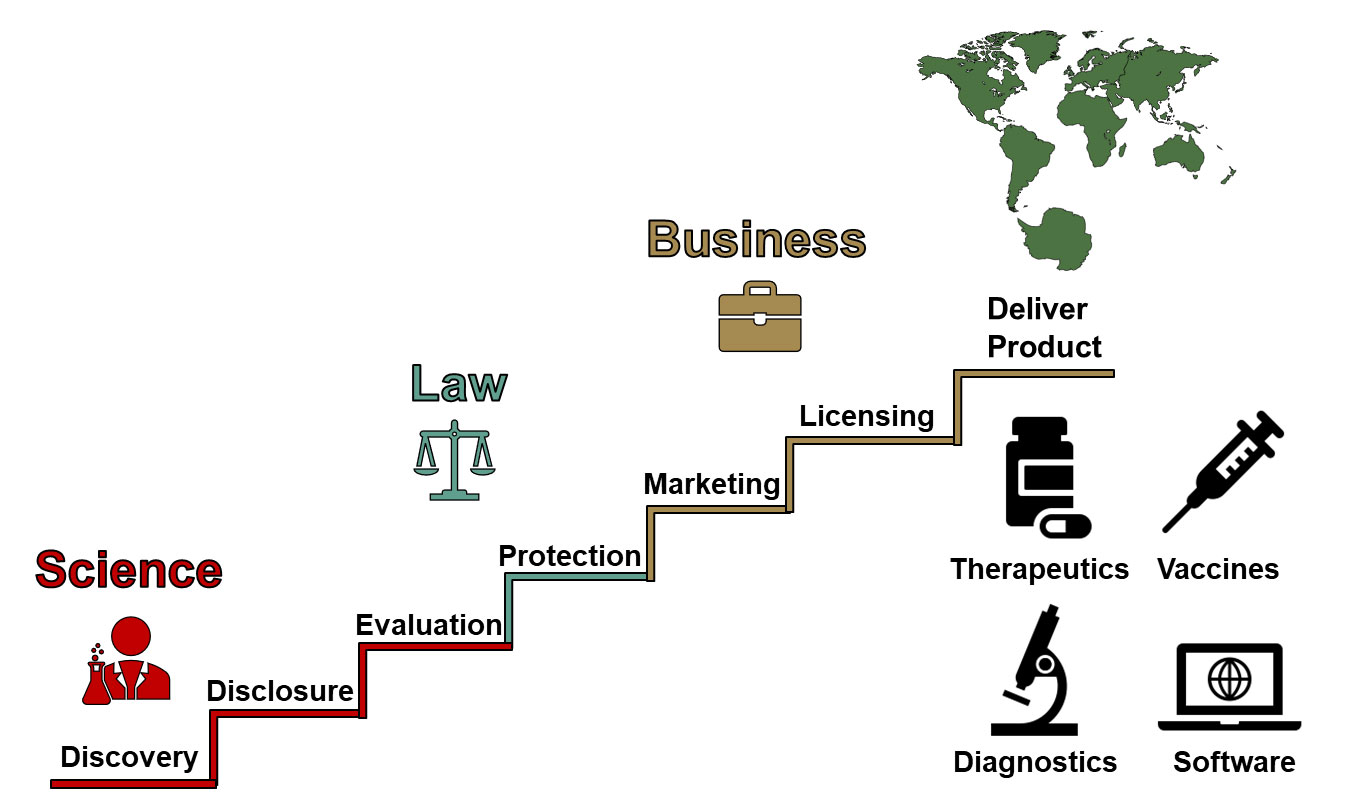Report on the Global Healthcare Supply Chain Management Market: 2025-2034
Executive Summary: Market Projections and Alignment with Sustainable Development Goals
The global healthcare supply chain management market is projected to experience significant growth, expanding from a valuation of USD 3.75 billion in 2024 to an estimated USD 6.32 billion by 2034. This represents a compound annual growth rate (CAGR) of 5.35% for the forecast period of 2025-2034. This expansion is intrinsically linked to the global pursuit of the United Nations Sustainable Development Goals (SDGs), particularly SDG 3 (Good Health and Well-being), which aims to ensure universal access to healthcare. An efficient and transparent supply chain is fundamental to delivering essential medicines and medical products, thereby strengthening health systems. Furthermore, the market’s growth is propelled by the adoption of advanced technologies, reflecting progress toward SDG 9 (Industry, Innovation, and Infrastructure) by building resilient and innovative healthcare infrastructure.
- 2024 Market Valuation: USD 3.75 Billion
- 2034 Market Projection: USD 6.32 Billion
- Forecast Period CAGR (2025-2034): 5.35%
- Primary Driver: The imperative to enhance healthcare access and efficiency in line with SDG 3.
- Technological Enabler: Integration of AI, IoT, and cloud solutions, advancing SDG 9.
Market Dynamics: Drivers, Restraints, and Opportunities in the Context of SDGs
Market Drivers
- Operational Cost Efficiency: Healthcare providers are under increasing pressure to optimize spending. Effective supply chain management (SCM) directly supports SDG 12 (Responsible Consumption and Production) by minimizing waste from expired or overstocked medical supplies and streamlining procurement processes. This financial sustainability allows for the reallocation of resources to improve patient care, furthering the objectives of SDG 3.
- Technological Integration for Resilient Infrastructure: The adoption of AI, IoT, and predictive analytics is a key driver, enabling real-time tracking, demand forecasting, and disruption management. This technological leap is a core component of SDG 9, fostering innovation and creating resilient supply chains capable of withstanding public health emergencies and ensuring continuous access to care.
- Stringent Regulatory and Traceability Mandates: Global regulations such as the U.S. DSCSA and the EU FMD compel organizations to adopt advanced SCM solutions. These mandates enhance product traceability and combat counterfeiting, directly contributing to patient safety and ensuring the integrity of healthcare products, a critical target within SDG 3.
- Shift to Cloud-Based Platforms: The move towards cloud-based SCM solutions offers scalability, centralized data access, and lower infrastructure costs. This facilitates the development of modern, interconnected healthcare networks, aligning with the call in SDG 9 for upgraded and sustainable infrastructure.
Market Restraints
- Supply Chain Disruptions and Shortages: The market’s growth is challenged by persistent drug shortages and logistical vulnerabilities, which undermine efforts to achieve SDG 3. Events such as natural disasters or geopolitical tensions expose the fragility of current systems, highlighting the urgent need for the resilient infrastructure promoted by SDG 9. In the first quarter of 2024, over 323 active drug shortages were reported, a record high that directly impacts patient care.
Market Opportunities
- Cloud Adoption for Enhanced Accessibility: The widespread adoption of cloud-based platforms presents a significant opportunity. These solutions democratize access to advanced SCM tools, allowing for real-time visibility and collaboration across the healthcare ecosystem. This trend supports the creation of responsive and scalable supply systems, fostering the multi-stakeholder partnerships essential for SDG 17 (Partnerships for the Goals) and strengthening the overall healthcare infrastructure (SDG 9).
Regional Analysis and SDG Implementation
North America: A Mature Market Driving Innovation
North America dominated the market in 2024 with a 39.8% share, driven by its advanced digital infrastructure and proactive adoption of SCM technologies. The region’s focus on reducing operational costs while improving patient outcomes aligns with the dual objectives of SDG 3 and SDG 12. Government initiatives promoting data interoperability and regulatory frameworks like the DSCSA reinforce the region’s commitment to building the secure, innovative infrastructure required by SDG 9. The U.S. market, valued at USD 1.04 billion in 2024, is projected to reach USD 1.78 billion by 2034, leading innovation through its integration of blockchain, IoT, and real-time analytics.
Asia Pacific: The Fastest-Growing Region for Healthcare Access
The Asia Pacific region is poised to be the fastest-growing market, driven by rising healthcare expenditures and government investments in digital health infrastructure. This growth represents a critical effort to advance SDG 3 by improving access to pharmaceuticals and medical devices for a vast population. National initiatives, such as India’s National Digital Health Mission, are fostering innovation and building resilient infrastructure (SDG 9) by promoting digital record-keeping and automated inventory management. The expansion of e-pharmacy platforms and third-party logistics enhances last-mile delivery, directly contributing to more equitable healthcare access.
Market Segment Analysis and Contribution to Sustainability
Component Insights
- The Software segment held the largest market share in 2024, with inventory management software being the dominant sub-segment. These tools are crucial for achieving SDG 12 by reducing waste and ensuring the efficient use of resources.
- The Analytics & Reporting sub-segment is projected to grow at the fastest rate. Its adoption enables data-driven decision-making, which is essential for optimizing healthcare delivery and resource allocation in line with SDG 3.
Delivery Mode Insights
- The Cloud-Based segment captured the largest market share (51.3%) in 2024. Its scalability and accessibility support the development of resilient and modern infrastructure (SDG 9), enabling healthcare organizations of all sizes to improve their supply chain capabilities and contribute to universal health coverage (SDG 3).
End-User Insights
- Healthcare Providers were the largest end-user segment in 2024, accounting for 34.7% of the market. Their central role underscores the direct impact of efficient SCM on patient care and the achievement of SDG 3.
- Healthcare Manufacturers are expected to be the fastest-growing segment, driven by the need for specialized, traceable supply chains for biologics and precision medicines. Their adoption of advanced SCM supports both innovation (SDG 9) and the delivery of advanced, safe therapies (SDG 3).
Technology Insights
- RFID technology led the market in 2024 with a 26.4% share. By providing real-time tracking and reducing errors, RFID improves inventory accuracy and minimizes loss, aligning with the principles of responsible consumption under SDG 12.
- The AI & Machine Learning segment is forecast to expand at the highest CAGR. These technologies enable predictive analytics for demand forecasting and procurement automation, fostering the innovation (SDG 9) needed to prevent stockouts and ensure the consistent availability of medical supplies (SDG 3).
Analysis of Sustainable Development Goals in the Article
1. Which SDGs are addressed or connected to the issues highlighted in the article?
- SDG 3: Good Health and Well-being: The article is centered on the healthcare sector. Its main focus is on improving the supply chain for pharmaceuticals and medical devices to ensure their availability, which is fundamental to providing quality healthcare services and achieving positive patient outcomes. The text addresses issues like drug shortages and the timely delivery of essential medical items.
- SDG 9: Industry, Innovation, and Infrastructure: The article extensively discusses the modernization of healthcare supply chain infrastructure through technological innovation. It highlights the adoption of AI, IoT, cloud computing, and blockchain to create more efficient, transparent, and resilient supply networks. This aligns with building resilient infrastructure and fostering innovation.
- SDG 8: Decent Work and Economic Growth: As a market analysis report, the article details significant economic activity, including market size projections (from USD 3.75 billion in 2024 to USD 6.32 billion by 2034) and a compound annual growth rate (CAGR) of 5.35%. This reflects economic growth driven by technological upgrading and improved productivity in the healthcare sector.
- SDG 12: Responsible Consumption and Production: The article points to the role of supply chain management in promoting sustainability. It explicitly mentions that these systems “help reduce inventory waste” and highlights an AI platform, AushadhAI, designed to “prevent medicine expiry,” directly contributing to the reduction of waste.
- SDG 17: Partnerships for the Goals: The article underscores the importance of collaboration. It references government regulations (U.S. DSCSA, EU’s FMD), international initiatives (WHO’s Global Health Logistics Transformation Agenda), and partnerships between private companies (e.g., COSMOS Pharmaceutical and RELEX Solutions) to achieve a more secure and efficient global healthcare supply chain.
2. What specific targets under those SDGs can be identified based on the article’s content?
- Target 3.8: Achieve universal health coverage, including access to quality essential health-care services and access to safe, effective, quality and affordable essential medicines and vaccines for all. The article’s entire premise of optimizing the supply chain for “pharmaceuticals, medical devices, hospital supplies” and addressing “drug shortages” directly supports the goal of ensuring access to essential medicines.
- Target 9.1: Develop quality, reliable, sustainable and resilient infrastructure… to support economic development and human well-being. The article discusses making supply chains resilient to disruptions like “geopolitical tensions or natural disasters” and reliable through “real-time tracking” and “predictive analytics.”
- Target 9.4: Upgrade infrastructure and retrofit industries to make them sustainable, with increased resource-use efficiency and greater adoption of… technologies. The discussion on the “Integration of AI and IoT” and the “Shift to Cloud-Based Solutions” to “cut waste” and “enhance efficiency” aligns perfectly with this target.
- Target 12.5: By 2030, substantially reduce waste generation through prevention, reduction, recycling and reuse. The article directly addresses this by stating that SCM systems “help reduce inventory waste” and that AI platforms can “prevent medicine expiry by identifying geographic patterns in stock expiration.”
- Target 17.17: Encourage and promote effective public, public-private and civil society partnerships. The article provides concrete examples, such as government regulations like the “U.S. Drug Supply Chain Security Act (DSCSA)” that compel digitization, and private sector collaborations like the one between “Compass Group Equity Partners” and “The Illuminate Group” to launch a new cold chain platform.
3. Are there any indicators mentioned or implied in the article that can be used to measure progress towards the identified targets?
- For Target 3.8: The article provides a direct indicator for challenges in medicine access by citing that “over 323 active drug shortages were reported in Q1 2024,” according to the American Society of Health-System Pharmacists (ASHP). Progress could be measured by a reduction in this number.
- For Target 9.1 & 9.4: The article implies progress through technology adoption rates and market share. For instance, it states the “cloud-Based segment captured the biggest market share of 51.3% in 2024” and the “RFID segment generated the major market share of 26.4% in 2024.” These figures serve as indicators of infrastructure upgrades.
- For Target 8.2: Economic productivity and growth are measured by financial metrics provided in the article, such as the “global healthcare supply chain management market size” (USD 3.75 billion in 2024) and its projected “CAGR of 5.35% from 2025 to 2034.”
- For Target 12.5: While not providing a quantitative metric, the article implies indicators related to waste reduction. The effectiveness of systems designed to “reduce inventory waste” and “prevent medicine expiry” could be measured to track progress.
- For Target 17.17: The implementation of and compliance with multi-stakeholder regulations like the “U.S. Drug Supply Chain Security Act (DSCSA)” and the “EU’s Falsified Medicines Directive (FMD)” serve as indicators of effective public-private action. The number of strategic partnerships, such as those listed in the “Recent Developments” section, is another implied indicator.
4. Table of SDGs, Targets, and Indicators
| SDGs | Targets | Indicators Identified in the Article |
|---|---|---|
| SDG 3: Good Health and Well-being | 3.8: Achieve access to quality essential medicines and vaccines for all. | Number of active drug shortages (e.g., “over 323 active drug shortages were reported in Q1 2024”). |
| SDG 9: Industry, Innovation, and Infrastructure | 9.1: Develop quality, reliable, sustainable and resilient infrastructure. 9.4: Upgrade infrastructure and industries for greater efficiency and sustainability. |
Adoption rate and market share of technologies (e.g., Cloud-based solutions at 51.3%, RFID at 26.4%). Investment in digital health infrastructure (e.g., India’s National Digital Health Mission). |
| SDG 8: Decent Work and Economic Growth | 8.2: Achieve higher levels of economic productivity through technological upgrading and innovation. | Market size (USD 3.75 billion in 2024). Compound Annual Growth Rate (CAGR of 5.35%). |
| SDG 12: Responsible Consumption and Production | 12.5: Substantially reduce waste generation. | Implementation of systems to “reduce inventory waste.” Use of AI platforms to “prevent medicine expiry.” |
| SDG 17: Partnerships for the Goals | 17.17: Encourage and promote effective public, public-private and civil society partnerships. | Implementation of and compliance with multi-stakeholder regulations (e.g., DSCSA, FMD). Formation of strategic corporate partnerships (e.g., COSMOS & RELEX). |
Source: precedenceresearch.com







